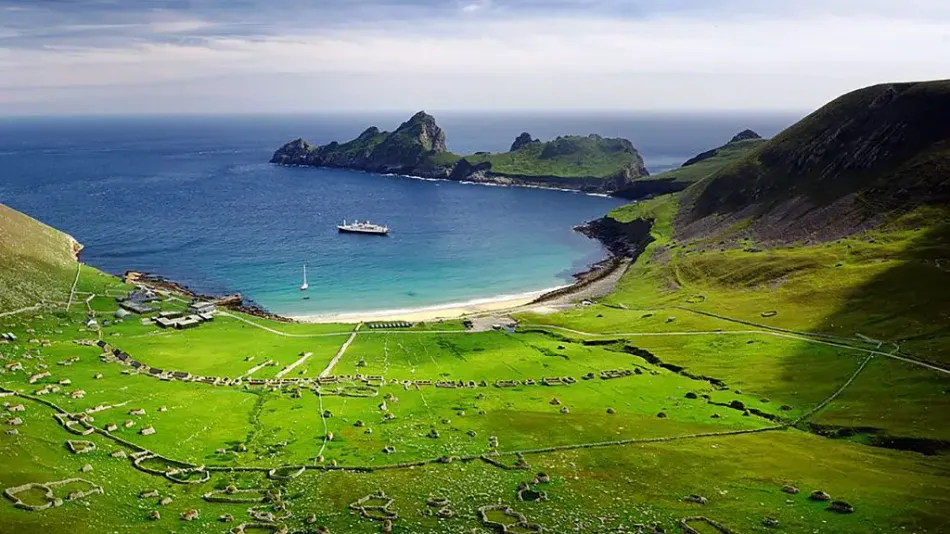Visit St Kilda – A World Heritage Site

Ready to travel to the edge of the world? Rising out of the turbulent Atlantic sea, the isolated Hebridean island of St. Kilda was left abandoned in 1930 when the community grew too small to sustain its way of life. The remnants of the settlement still lie in the curve of Village bay, sheltered from the wind by the island’s towering cliffs and hills, and overlooking the vast blue sea below. Visit the church, manse and museum (some of the only restored buildings on the street), and learn about the history of St. Kilda dating as far back as the Bronze age.
Interested in hill walking? Hike up the summit of Conachair and the highest sea cliffs in the UK for spectacular views. The island is also home to the UK’s largest colony of Atlantic puffins so lovers of wildlife and history alike will love visiting this incredible location!
Why should I visit St. Kilda?
St. Kilda can only be reached by boat, so you’ll need to book one of the charter boats from Skye, The Western Isles or the mainland to get there. If you want to sail your own boat be sure to read up on their requirements to keep the island safe from pests and disease. Their campsite is open to a maximum of five nights stay at £20 per person per night, with bathroom and shower facilities. You’ll have to bring your own food for the duration of your stay as there are no shops or cafes on St. Kilda and be aware that you’ll be totally cut off from Wi-Fi and mobile phone reception. If you’re looking to disconnect from the world for a bit and experience the unique beauty of a place cut off from the modern world then St Kilda is well worth a visit.
- Free entry
- The campsite is £20 per person per night
- Bring your own food and drink
- Pets are not permitted onshore in order to protect the wildlife